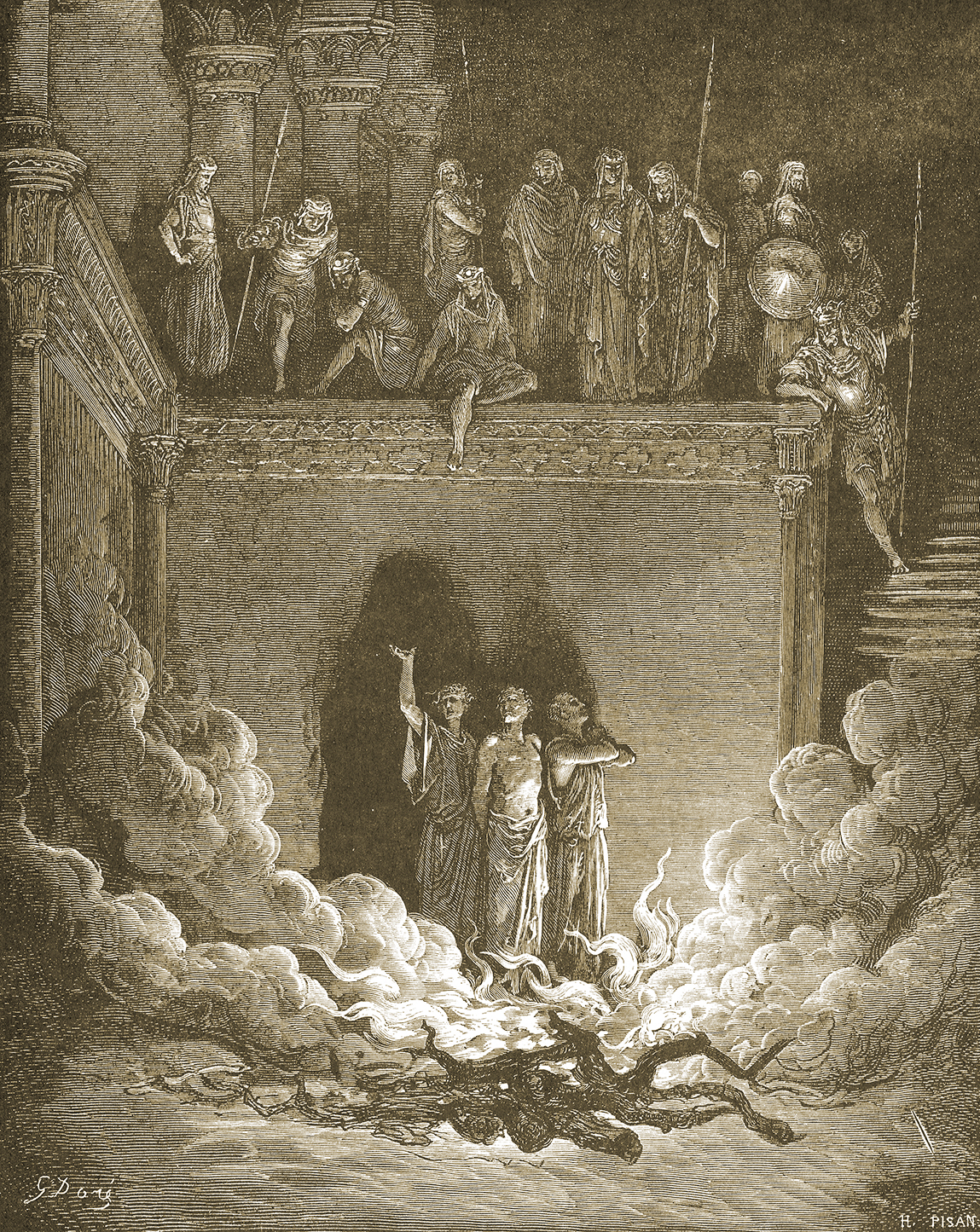Below, an abridged translation from the third volume of
Karlheinz Deschner’s Kriminalgeschichte des Christentums.
The same as the work of Isaiah, the book of Ezekiel, written almost all in the first person, unites prophecies of misfortunes and beatitudes, reprimands and threats with tempting hymns and omens. For a long time it was considered the undisputed writing of the most symbolic Jewish prophet, the man who in the year 597 BC left Jerusalem with King Jehoiakim to exile in Babylon.
Until the beginning of the 20th century Ezekiel’s book was almost universally seen as a work of the prophet himself and of true authenticity. From the investigations of literary criticism by R. Kraetzschmars (1900) and even more by J. Herrmann (1908, 1924), the opinion prevailed that this presumably unitary book emerged in stages and that a subsequent hand reworked it. Some researchers even attribute to Ezekiel only the poetic parts, assigning to the compiler the texts in prose.
In this scenario the compiler would have designed at least the bulk of the work: no less than five-sixths. According to W.A. Irwin, of the total of 1,273 verses only 251 come from Ezekiel and according to G. Hölscher, 170. Although other authors accept the authenticity of the text, they admit several redactions and editors, who interspersed falsified passages among those considered authentic and also manipulated the rest at their discretion. It is very significant that the Jewish tradition does not attribute the work to Ezekiel, but to the ‘men of the great synagogue’.
The book of Daniel was clearly and completely fabricated: something that, surprisingly, already affirms Porphyry, the great adversary of the Christians, in the 3rd century. Although his fifteen books Against the Christians were targeted for destruction by the first Christian emperor, something has been preserved in excerpts and quotations, among them the following phrases of Jerome in the prologue of his comments on Daniel:
Porphyry has destined, against the prophet Daniel, the book XII of his work. He does not want to admit that the book was written by Daniel, whose name appears on the title, but by someone who lived in the time of Antiochus Epiphanes (that is, some 400 years later) in Judea, and maintains that Daniel did not predict anything of the future but simply told something of the past.
The book of Daniel would come from the prophet Daniel, who apparently lived in the 6th century BC in the royal court of Babylon and whose authorship has also been questioned in modern times by Thomas Hobbes. Critical research has long since stopped considering it an authentic book. But in 1931 the Catholic Lexikonfür Theologie und Kirche (Encyclopaedia for Theology and the Church) says: ‘The nucleus of the different episodes can reach very ancient times, even that of Daniel… Most of the Catholic exegetes essentially consider Daniel as the author of the book’.
The first-person form of the visions of chapters 7-12 and, of course, their place in the Holy Scriptures made the Christian tradition believe for a long time in the authorship of the book by Daniel: about whose life and acts they know only for his own work. It is probable that it was the last to reach the canon of the Old Testament and, from the traditionalist point of view, must be defended accordingly as authentic.
But it comes from the Revelations of the time of the Syrian king Antiochus IV Epiphanes, probably from the year of the revolt of the Maccabees, 164 BC. Ergo the author lived long after the events described in the historical part of his book written in the third person (chapters 1-6). In this way, the ‘prophet Daniel’, who four centuries before is the servant of King Nebuchadnezzar in ‘Babel’ and who understands ‘stories and dreams of all kinds’, can easily prophesy. This is what Porphyry had discovered.
Consequently, in the historical epoch of the book in which Daniel presumably lived and described, the ‘prophet’ mixes everything. Thus, Balthazar, the organiser of the famous banquet, although was a regent he was not ‘king’. Balthazar was not the son of Nebuchadnezzar but of Nabonidus, the last Babylonian king (555-539). Artaxerxes did not come before Xerxes but after him and ‘Darius the Mede’ is not a historical figure at all. In short, ‘Daniel’ knew more about visions than about the time he lived.
 Special forgeries of the Septuagint are also some well-known pieces, which Catholics call Deuterocanonics and Protestants apocryphal: the story of the Three Boys in the Fiery Furnace [Left: Gustave Doré’s illustration], the story of Susanna and Bel and the Dragon. All these special fabrications appear today in the Catholic Bible.
Special forgeries of the Septuagint are also some well-known pieces, which Catholics call Deuterocanonics and Protestants apocryphal: the story of the Three Boys in the Fiery Furnace [Left: Gustave Doré’s illustration], the story of Susanna and Bel and the Dragon. All these special fabrications appear today in the Catholic Bible.
The book of Daniel is the oldest apocalypse and, among all the apocalyptic literature. the only one that reaches the Old Testament and consequently becomes canonical. In the Catholic Bible there is another forgery, Baruch’s ‘Deuterocanonical’ book, with which we turn our attention to a special literary genre, made up of obvious falsifications, which later goes on in an organic and integral way into Christianity.
______ 卐 ______
Liked it? Take a second to support this site.